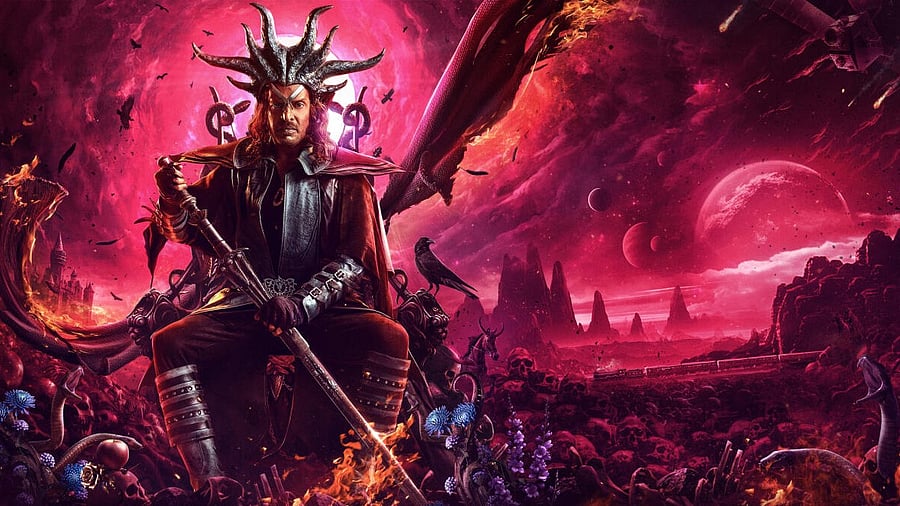
Upendra in UI.
Credit: Special Arrangement
In films like A, Upendra, and Super, actor-director Upendra relied on unconventional filmmaking templates to entertain the audience. In UI, he builds upon this template, and blends contemporary political and societal issues. Here, he takes a more activist approach to spark meaningful conversations and inspire change.
The plot is simple: humans, driven by greed, have ravaged the environment. Society is fragmented, plagued by political and fundamental divisions. Illusions have permeated the social landscape, rendering people oblivious to harsh realities. This gives rise to absurdities. The situation appears endless, trapped in a cycle of senselessness. A solution is available. Society is waiting for a messiah to deliver it.
The film, essentially a political satire, holds a mirror to society. It prompts viewers to confront the consequences of humanity’s destructive tendencies and the need for a collective awakening.
Upendra employs metaphors to convey his political and social philosophy. Through bold and unapologetic storytelling, he mocks society’s entrenched preferences and beliefs. He presents two potential solutions for the climax, allowing viewers to choose their own climax.
Influences from thinkers like Albert Camus, Bertolt Brecht, and D H Lawrence are evident, alongside the philosophies of Buddha and Basavanna.
UI demands intense focus and attention. The cinematography captures the essence of the narrative. The well-designed sets transport viewers to a visually stunning world. The VFX work integrates seamlessly with the live-action elements and background music complements the on-screen action.
Upendra’s dual roles as Kalki and Sathya make him omnipresent in the film. Others like Ravishankar, Achyuth Kumar, Reeshma Nanaiah, and Sadhu Kokila have limited screen presence.
Regardless of its commercial prospects, UI is a one-of-a-kind project in terms of its plot, treatment, narration, and overall filmmaking approach.